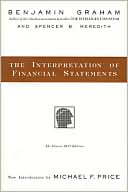Category Books
- Fiction Books & Literature
- Graphic Novels
- Horror
- Mystery & Crime
- Poetry
- Romance Books
- Science Fiction & Fantasy
- Thrillers
- Westerns
- Ages 0-2
- Ages 3-5
- Ages 6-8
- Ages 9-12
- Teens
- Children's Books
- African Americans
- Antiques & Collectibles
- Art, Architecture & Photography
- Bibles & Bible Studies
- Biography
- Business Books
- Christianity
- Computer Books & Technology Books
- Cookbooks, Food & Wine
- Crafts & Hobbies Books
- Education & Teaching
- Engineering
- Entertainment
- Foreign Languages
- Game Books
- Gay & Lesbian
- Health Books, Diet & Fitness Books
- History
- Home & Garden
- Humor Books
- Judaism & Judaica
- Law
- Medical Books
- New Age & Spirituality
- Nonfiction
- Parenting & Family
- Pets
- Philosophy
- Political Books & Current Events Books
- Psychology & Psychotherapy
- Reference
- Religion Books
- Science & Nature
- Self Improvement
- Sex & Relationships
- Social Sciences
- Sports & Adventure
- Study Guides & Test Prep
- Travel
- True Crime
- Weddings
- Women's Studies
The Interpretation of Financial Statements: The Classic 1937 Edition »

Authors: Benjamin Graham, Spencer B. Meredith
ISBN-13: 9780887309137, ISBN-10: 0887309135
Format: Hardcover
Publisher: HarperCollins Publishers
Date Published: June 1998
Edition: (Non-applicable)
Author Biography: Benjamin Graham
Benjamin Graham (1894-1976), the father of value investing, has been an inspiration for many of today's most successful businesspeople. He is also the author of Securities Analysis and The Interpretation of Financial Statements.
Book Synopsis
"All investors, from beginners to old hands, should gain from the use of this guide, as I have."
From the Introduction by Michael F. Price, president, Franklin Mutual Advisors, Inc.
Benjamin Graham has been called the most important investment thinker of the twentieth century. As a master investor, pioneering stock analyst, and mentor to investment superstars, he has no peer.
The volume you hold in your hands is Graham's timeless guide to interpreting and understanding financial statements. It has long been out of print, but now joins Graham's other masterpieces, The Intelligent Investor and Security Analysis, as the three priceless keys to understanding Graham and value investing.
The advice he offers in this book is as useful and prescient today as it was sixty years ago. As he writes in the preface, "if you have precise information as to a company's present financial position and its past earnings record, you are better equipped to gauge its future possibilities. And this is the essential function and value of security analysis."
Written just three years after his landmark Security Analysis, The Interpretation of Financial Statements gets to the heart of the master's ideas on value investing in astonishingly few pages. Readers will learn to analyze a company's balance sheets and income statements and arrive at a true understanding of its financial position and earnings record. Graham provides simple tests any reader can apply to determine the financial health and well-being of any company.
This volume is an exact text replica of the first edition of The Interpretation of Financial Statements, published by Harper & Brothers in 1937. Graham's original language has been restored, and readers can be assured that every idea and technique presented here appears exactly as Graham intended.
Highly practical and accessible, it is an essential guide for all business people—and makes the perfect companion volume to Graham's investment masterpiece The Intelligent Investor.
Michael F. Price
This reissue of the classic 1937 edition ... is right on time.... [The] basic study of financial statements by the average investor is more important than ever.
Table of Contents
I. BALANCE SHEETS IN GENERAL 3
II. DEBITS AND CREDITS 5
III. TOTAL ASSETS AND TOTAL LIABILITIES 9
IV. CAPITAL AND SURPLUS 11
V. PROPERTY ACCOUNT 14
VI. DEPRECIATION AND DEPLETION 16
VII. NON-CURRENT INVESTMENTS 19
VIII. INTANGIBLE ASSETS 21
IX. PREPAID EXPENSES 24
X. DEFERRED CHARGES 26
XI. CURRENT ASSETS 28
XII. CURRENT LIABILITIES 30
XIII. WORKING CAPITAL 31
XIV. CURRENT RATIO 34
XV. INVENTORIES 36
XVI. RECEIVABLES 39
XVII. CASH 41
XVIII. NOTES PAYABLE 43
XIX. RESERVES 45
XX. BOOK VALUE OR EQUITY 48
XXI. CALCULATING BOOK VALUE 50
XXII. BOOK VALUE OF BONDS AND STOCKS 52
XXIII. OTHER ITEMS IN BOOK VALUE 54
XXIV. LIQUIDATING VALUE AND NET CURRENT Asset Value 55
XXV. EARNING POWER 57
XXVI. A TYPICAL PUBLIC UTILITY INCOME ACCOUNT 58
XXVII. A TYPICAL INDUSTRIAL INCOME ACCOUNT 61
XXVIII. A TYPICAL RAILROAD INCOME ACCOUNT 62
XXIX. CALCULATING EARNINGS 64
XXX. THE MAINTENANCE AND DEPRECIATION FACTOR 67
XXXI. THE SAFETY OF INTEREST AND PREFERRED DiVIDENDS 70
XXXII. TRENDS 72
XXXIII. COMMON STOCK PRICES AND VALUES 74
XXXIV. CONCLUSION 77
PART II. ANALYZING A BALANCE SHEET AND INCOME ACCOUNT BY THE RATIO METHOD 81
PART III. DEFINITIONS OF FINANCIAL TERMS AND PHRASES 91
Subjects

